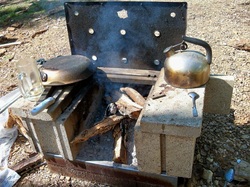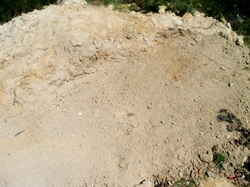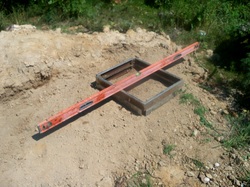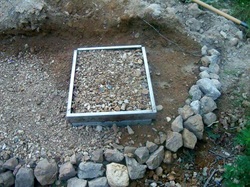I know there are many preppers out there who are getting ready for "something" to happen. While I think that listening/reading/watching them can be helpful, I don't know if something bad is coming at us or not. However, I do think having a good supply of self safe food(s) available for 'just in case'.
Where I am living we get told at the beginning of 'storm season' (tornado season), we are told to have a emergency kit just in case we have one hit near us and there is no power what will you do for food and water? So instead of just waiting for one instance of one season to hit you. Where I live in Missouri we could have a blizzard, if we do; and I live in a very rural area. When would I receive help? When would the roads be clear enough to get food from a store? If the power went out after it thankfully I have a wood stove for heat. However my cook stove is electric.
Look back at first Katrina, and then Sandy. Both of them had issues with people getting food, Katrina was, pardon this; a clusterf###! Then with Sandy parts of the cities were without access to food for a week. What would you do in this situation? The biggest problem for a city is that 90% of your home is electric. I know in the Chicago area most people have gas stoves and heat, unless you have matches what will you use to light your stove?
I would like to see people keeping some extra foods that are shelf stable that can be eaten without cooking, while I know this is very limited in scope for the people who are picky eaters. But, let me ask you this. What would you prefer? Not having any food or having something you can eat though you do not like it?
When I go shopping I tend to buy an item or two that I am not planning on using right then. It gets put in the pantry for later use, whenever I find tuna on sale or peanut butter I buy lots of it. I don't like peanut butter, but if I had to I'd eat it.
Now with that said, I have a comment on something that has popped up all over the place.
#1 Buying MRE's for your emergency stash
#2 Buying tons of dried foods for your emergency stash
#3 forgetting to account for water
Lets start with #1... How many of you out there who think MRE's are a good idea have eaten them before? I know I have only tried one type, Silver has tried many as he was in the military. I was lucky the one I tried which I think was a chicken parma was good... not the best I'd ever had though. I have been told by a few people (Silver included) that the tuna one is horrible, Silver thought it looked like and smelled like cat food. Also each MRE is suppose to be 3,000 calories which for most people is the total calories you need. The cost can go anywhere form $5-$12 a piece, which if you bought canned goods the MRE's would be more in cost. You also need to check the dates on the MRE's as sometimes the ones you can buy are out of date... or they were rejected by the military.
#2 What good will dried anything do you if it needs to be re-hydrated with hot/warm water? Or even cooked, if you have no way to heat or cook something? I know dried fruits can be eaten as is, how long before you get ill from just eating fruits in an emergency situation? Dried foods can be wonderful, but they need water to be edible aside from dried fruit... and sometimes the dried fruit needs water. If you try to eat the dried foods dry, you will probably eat more than you should as they won't be very satisfying unless eaten in large quantities. That said I do think they have their use, if you have the water available and the ability to cook the items that need cooking.
#3 I think this one is the most important, people don't tend to think of water when they store food for emergencies. Now, I am the first person to say to not buy bottled water, however. In the case of storing water for long term buy bottled water, you need about 3 gallons a person per day. Which is a lot of water, and if the power is off there will be no water coming out of your taps, eventually in the cities the tanks where water is stored will run out.
Now some other things you should have for an emergency. Extra blankets, if you have no heat you will need them to keep warm. Also flashlights, WITH extra batteries; you'll need them at night and in dark corridors. A fire extinguisher, a working one; also not a "kitchen sized" one as they don't put out anything the average one lasts maybe 20-30 seconds. What happens if you do manage to get your stove going and it catches on fire? You'd need that extinguisher for that possibility. I'd also suggest having something to entertain your kids if you have any, I know that when I was a kids power outages didn't bug me as I read like a book worm. I know most kids are not like I was though.
You should also have a GOOD first aid kit, and I don't mean one of those under $20 ones at Wal-Mart. They are not really helpful. Ask your doctor what they'd recommend in one for emergencies. Also maybe take a class on first aid, you never know when it might help.
Now please note... this is not a comprehensive list... nor is there any such things as a "magical list" that will work for everyone. I am no expert on this stuff, but I know what makes sense to me; and what I have observed. Make the decision for yourself.
Be Well, Be Safe, and Blessed Be...
Where I am living we get told at the beginning of 'storm season' (tornado season), we are told to have a emergency kit just in case we have one hit near us and there is no power what will you do for food and water? So instead of just waiting for one instance of one season to hit you. Where I live in Missouri we could have a blizzard, if we do; and I live in a very rural area. When would I receive help? When would the roads be clear enough to get food from a store? If the power went out after it thankfully I have a wood stove for heat. However my cook stove is electric.
Look back at first Katrina, and then Sandy. Both of them had issues with people getting food, Katrina was, pardon this; a clusterf###! Then with Sandy parts of the cities were without access to food for a week. What would you do in this situation? The biggest problem for a city is that 90% of your home is electric. I know in the Chicago area most people have gas stoves and heat, unless you have matches what will you use to light your stove?
I would like to see people keeping some extra foods that are shelf stable that can be eaten without cooking, while I know this is very limited in scope for the people who are picky eaters. But, let me ask you this. What would you prefer? Not having any food or having something you can eat though you do not like it?
When I go shopping I tend to buy an item or two that I am not planning on using right then. It gets put in the pantry for later use, whenever I find tuna on sale or peanut butter I buy lots of it. I don't like peanut butter, but if I had to I'd eat it.
Now with that said, I have a comment on something that has popped up all over the place.
#1 Buying MRE's for your emergency stash
#2 Buying tons of dried foods for your emergency stash
#3 forgetting to account for water
Lets start with #1... How many of you out there who think MRE's are a good idea have eaten them before? I know I have only tried one type, Silver has tried many as he was in the military. I was lucky the one I tried which I think was a chicken parma was good... not the best I'd ever had though. I have been told by a few people (Silver included) that the tuna one is horrible, Silver thought it looked like and smelled like cat food. Also each MRE is suppose to be 3,000 calories which for most people is the total calories you need. The cost can go anywhere form $5-$12 a piece, which if you bought canned goods the MRE's would be more in cost. You also need to check the dates on the MRE's as sometimes the ones you can buy are out of date... or they were rejected by the military.
#2 What good will dried anything do you if it needs to be re-hydrated with hot/warm water? Or even cooked, if you have no way to heat or cook something? I know dried fruits can be eaten as is, how long before you get ill from just eating fruits in an emergency situation? Dried foods can be wonderful, but they need water to be edible aside from dried fruit... and sometimes the dried fruit needs water. If you try to eat the dried foods dry, you will probably eat more than you should as they won't be very satisfying unless eaten in large quantities. That said I do think they have their use, if you have the water available and the ability to cook the items that need cooking.
#3 I think this one is the most important, people don't tend to think of water when they store food for emergencies. Now, I am the first person to say to not buy bottled water, however. In the case of storing water for long term buy bottled water, you need about 3 gallons a person per day. Which is a lot of water, and if the power is off there will be no water coming out of your taps, eventually in the cities the tanks where water is stored will run out.
Now some other things you should have for an emergency. Extra blankets, if you have no heat you will need them to keep warm. Also flashlights, WITH extra batteries; you'll need them at night and in dark corridors. A fire extinguisher, a working one; also not a "kitchen sized" one as they don't put out anything the average one lasts maybe 20-30 seconds. What happens if you do manage to get your stove going and it catches on fire? You'd need that extinguisher for that possibility. I'd also suggest having something to entertain your kids if you have any, I know that when I was a kids power outages didn't bug me as I read like a book worm. I know most kids are not like I was though.
You should also have a GOOD first aid kit, and I don't mean one of those under $20 ones at Wal-Mart. They are not really helpful. Ask your doctor what they'd recommend in one for emergencies. Also maybe take a class on first aid, you never know when it might help.
Now please note... this is not a comprehensive list... nor is there any such things as a "magical list" that will work for everyone. I am no expert on this stuff, but I know what makes sense to me; and what I have observed. Make the decision for yourself.
Be Well, Be Safe, and Blessed Be...




 RSS Feed
RSS Feed